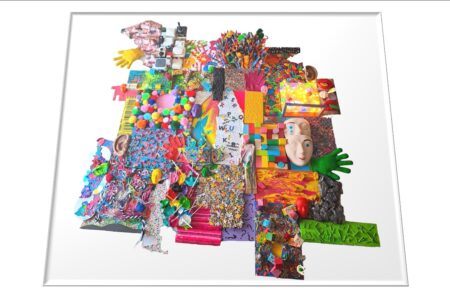Who gets caught by the emotion?
Have you ever stepped in front of an audience and immediately spotted this person who didn’t seem happy with your talk? Or are you someone who is drawn to an encouraging face? What is it that makes people more likely to attend to different emotional expressions?
Emotions as social navigators
Imagine yourself walking along the street on a sunny day. You are looking around, not searching for anything in particular. Suddenly, however, your eyes fix on the face of a guy with a disgusted expression. You follow his gaze, which points directly in front of you, and immediately know the reason for his disgust: you were just about to step in a huge pile of dog poo! This is one of an endless number of scenarios in which emotional expressions help us navigate through daily life. Already as babies, we rely on our mother’s expressions to tell us what is safe to do and what not. By following others’ cues, we can learn about the shared environment, with all its challenges and opportunities. This includes our direct social environment: imagine that the guy’s face in the earlier example was not pointed towards the ground but towards you, seething with rage. Maybe it’s because you’re wearing your Ajax shirt, or maybe he’s just in a bad mood… Whatever the reason, it’s better to step out of this person’s way! Emotional expressions are a very effective means of communication between people. In any case, they help us filter what is crucial for our next actions.
How to measure attentional biases towards emotions
As researchers, we need more evidence than anecdotes from daily life to assert that people attend more strongly to emotional expressions. Therefore, the so-called ‘dot-probe task’ was developed, which requires people to react to a dot appearing behind one of two pictures. These pictures are only shown for a split second. If a picture automatically attracts attention, as an emotional one usually does, people tend to react very fast to the dot behind it. When the dot appears behind the non-emotional picture, reactions are slower. The difference in reaction times to emotional and neutral stimuli gives us a measure of the priority in attention, known as an “attentional bias”. In most studies that use this task, researchers have indeed found that people on average react faster to faces displaying emotions, such as happiness or fear. Yet reactions are not the same for all emotions, and not for everyone.
Different people – different biases?
The earlier example of immediately spotting an angry face in an audience highlights a prominent attentional bias: the bias to social threat. As social beings, we want to be liked by others and fear being disliked. This is especially the case for people with social anxiety. For them, the fear of being judged negatively by others automatically elicits a mode that is focused on detecting potential negative judgments. As a consequence, many studies have found attentional biases to angry facial expressions to be stronger in socially anxious people than in others. In contrast, there are also reasons why some people might avoid emotional expressions. For example, individuals on the autism spectrum tend to avoid the emotion-revealing eye region as it makes them feel uncomfortable.
What we observed
Our research group recently investigated how – in people without a clinical diagnosis of autism or social anxiety – traits associated with social anxiety and autism were linked to attentional biases to angry, happy, sad, and fearful faces. In line with the importance of emotional expressions in daily life, all such expressions received prioritised attention from participants in our study. Perhaps surprisingly, no expression stood out compared to the others. Additionally, we did not find clearly increased or decreased biases in people with higher social anxiety or autistic trait levels. Attentional biases seemed to depend more on an interplay between individual characteristics.
Outlook for real life
You might argue that seeing an emotional picture on a computer screen and reacting to a dot is quite different from the real-life example at the beginning. Indeed, highly simplified psychological tasks can only give us an idea of what’s happening in the real world. Luckily, however, modern technologies such as wearable eye-trackers promise possibilities to confirm or challenge computer-based findings in real life. Less structured situations would further allow for observing variations in the allocation of attention beyond faces for a split second. Here, systematic differences associated with social anxiety and/or autism might also be more strongly related to difficulties in everyday social situations. And this is where research can find its application in clinical practice, helping people with such conditions to make the most of emotional expressions as social navigators.





